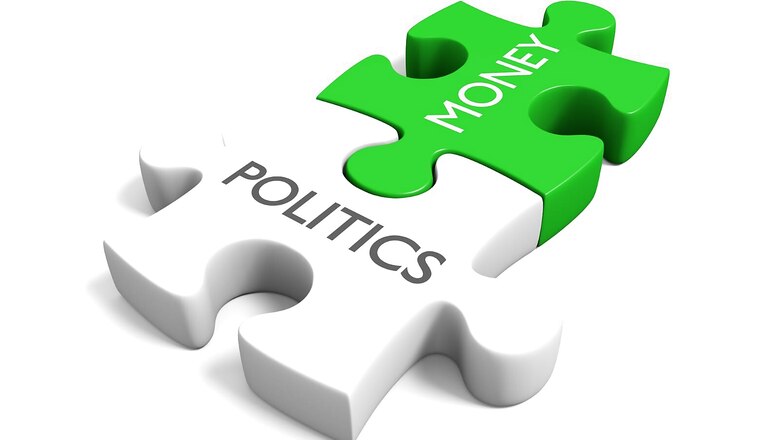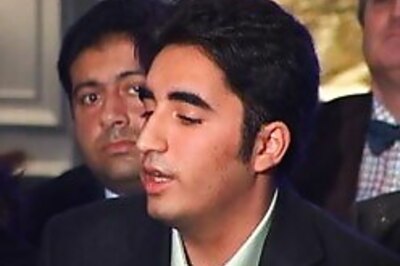
views
On the eve of Assembly polls in Himachal Pradesh, the Election Commission of India reported a total seizure in cash and kind worth Rs 50.28 crore in the state. This marked more than five-fold increase since the last Assembly polls (2017) when it was pegged at Rs 9.03 crore.
As for Gujarat, where the elections were still three weeks away, seizures in cash and kind had already touched Rs 71.88 crore (11 November), dwarfing the haul of Rs 27.21 crore recorded during the previous Assembly elections (2017). While the record figures might demonstrate the success of electoral planning by the Election Commission, efficiency of the law enforcing agencies, and effectiveness of mobile Apps like C-Vigil, they simultaneously reveal the deep muck in electoral politics of India.
There are legal provisions both in the Indian Penal Code (Sections 171 B to 171 I) and Representation of the People Act, 1951 (various) to deal with acts of bribery. However, seizures of such magnitude indicate the level of unaccounted cash circulating in the elections. Though there is a ceiling on individual expenditure of candidates, there is no limit on the money political parties can spend on elections.
As early as 1974, a two-judge bench of the Supreme Court, in Kanwar Lal Gupta v/s Amar Nath Chawla & Ors case, had noted that the purpose of imposing a ceiling on a candidate’s election expenditure would be completely frustrated if no expenditure limit was imposed on the political party sponsoring him or his friends/supporters were free to spend as much as they liked. The Representation of the People Act, 1951 was amended in 1974 to nullify the effect of the same judgment. An explanation was inserted to Section 77 (1) that third party expenditure in connection with a candidate’s election shall not be deemed to be expenditure incurred by the candidate.
While the Election Commission of India has been pitching for a formula to limit the expenditure by the political parties, the parties themselves are trying to avert this. The reported expenditure on elections by political parties is jaw dropping. During the 17th Lok Sabha elections (2019) the two large national parties — Bharatiya Janata Party that contested 436 seats and the Congress that contested 421 seats — spent Rs 12.64 billion and Rs 8.20 billion respectively. The unreported expenditures of the political parties are best left to imagination.
What explains this desire to enter the legislature literally at all costs? It is merely for the aspiration to “serve the people”, as the tagline of advertising one’s political ambition goes? Or is it also about securing access to wealth at will? Little wonder that politicians’ assets experience sharp increase from one election to the next.
The relationship between politics and moneybags was detected quite early by C Rajagopalachari. In a series of scathing articles written between 1957 and 1970 he laboured to ‘rescue democracy from money power’. “Ambitious politicians,” writes Rajaji, “find themselves at the mercy of parties; and parties are at the mercy of financiers”. The Congress, a party he resigned from, was the special target of Rajaji’s attack. The Congress not only monopolised the political space then, but those being the days of nationalisation and license-quota raj, the ruling party enjoyed enormous advantage in collection of party funds. Rajaji was in favour of banning corporate donations to the parties.
Corporate donations were prohibited in 1969. However, it did not result in reduction in corporate donations. For the lack of any alternate model of fundraising, it only increased covert and black money donations. The ban was thus subsequently lifted; and an attempt was made to regulate it. However, political funding in India still remains in a nebulous zone.
In 2003, Section 29 C was inserted in the Representation of the People Act, 2003 making it mandatory for parties to report on annual basis of contributions received in excess to Rs 20,000. The Election Commission has been pitching for reform in this regard for disclosure of total contribution in less than Rs 20,000. However, it would require a statutory amendment, critically dependent on the favourable view taken by the government.
Even going by above Rs 20,000 donations, the political parties have not done badly. For instance, during FY 2020-21, when the economy contracted due to extended lockdown on account to Covid outbreak, the BJP was able to report a donation of Rs 477 crore, and Congress Rs 74.5 crore.
The introduction of electoral bonds by the government has complicated the scenario without improving transparency. A reply to an unstarred question (No.2908) on March 21, 2022 in Lok Sabha shows there is no prohibition, or limit, on a political party accepting donation by cash. A scathing observation on electoral bonds comes from the July, 2020 Lok Sabha Members Reference Service (LARRDIS) note-
“Prior to 2017, Section 182 of the Companies Act, 2013 stipulated that a company could donate only up to 7.5% of its average profit of the last three years, and must disclose this amount and the beneficiary political party. The government moved an amendment in the Finance Bill to ensure that this proviso would not be applicable to companies in the case of electoral bonds. Now, through the electoral bonds, there is no limit to the amount companies can donate, and the requirement for such firms to have existed for the last three years on a profit-making basis has also been deleted. The implication is that even loss-making companies or shell companies can be used to purchase electoral bonds. Essentially, then, corporate entities — and individuals — can now funnel unlimited amounts to a political party through electoral bonds, anonymously Prior to 2017, Section 182 of the Companies Act, 2013 stipulated that a company could donate up to 7.5% of its average profit”.
The popularity of electoral bonds was instantaneous, as evident from reply to an unstarred 1863) No. in the Lok Sabha on 14 March 2022. In the very first year (2018) electoral bonds worth Rs 10.56 billion were sold, out of which bonds worth Rs 10.45 billion were encashed. The beneficiary party remained as anonymous to the public as the donors.
In 2019- the year of Lok Sabha elections- the sale shot up to Rs 50.71 billion, out of which bonds worth Rs 50.62 billion were encashed. After noticing a sharp dip of mere Rs 3.63 billion in sales in 2020 (when there were elections only in Delhi and Bihar), the demand picked up again in 2021. Though no party wise breakdown of figures is available, it is evident that Indian politics is bankrolling on anonymous funding, despite its favourite commitment of eradicating poverty.
Once upon a time there was a suggestion for state funding the elections. A seven-member committee chaired by Indrajit Gupta, was set up for the purpose in 1998. Though the idea of state funding of elections has lost its traction, being somewhat impractical, the intention behind it is still appreciable. The aim was to make elections less expensive, and more transparent in the matter of financing. Unfortunately, this idea seems to have given up lately.
Whether it was the Dinesh Goswami Committee on Election Reforms, or the Indrajit Gupta Committee on State Funding, it showed sincerity of the government towards electoral reforms, which was not left to the Election Commission of India alone. Both these committees had MPs from several political parties. Such government initiatives have of late been missing, indicating a dip in the political will.
The then Speaker of Lok Sabha, PA Sangma, put it bluntly: “Elections are costly. Money has to come from somewhere. Political leaders get dependent on sources from where money comes. Quid pro quo is struck. This kills ethics” (May 30, 1997).
As political parties turn into vote-winning machines, ethics is given a short shift. Delivering a corruption free and clean government is high on the agenda of Prime Minister Narendra Modi. However, the battle against corruption could not be won without making elections less pompous and political funding more transparent.
The writer is an independent researcher and the author of the book ‘The Microphone Men: How Orators Created a Modern India’. Views expressed are personal.
Read all the Latest Opinions here


















Comments
0 comment